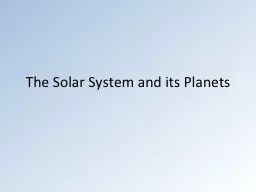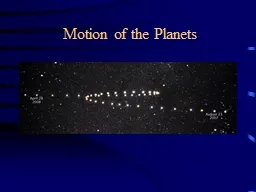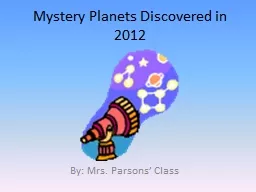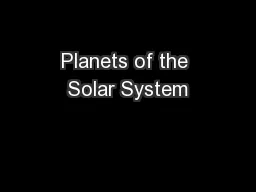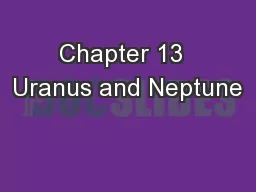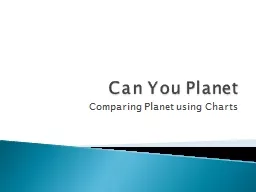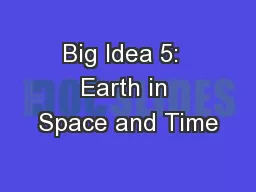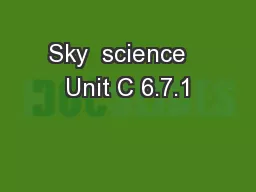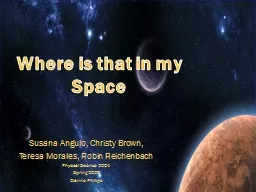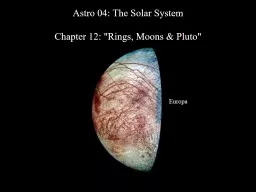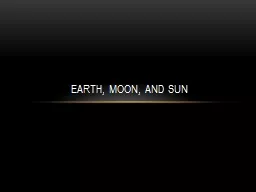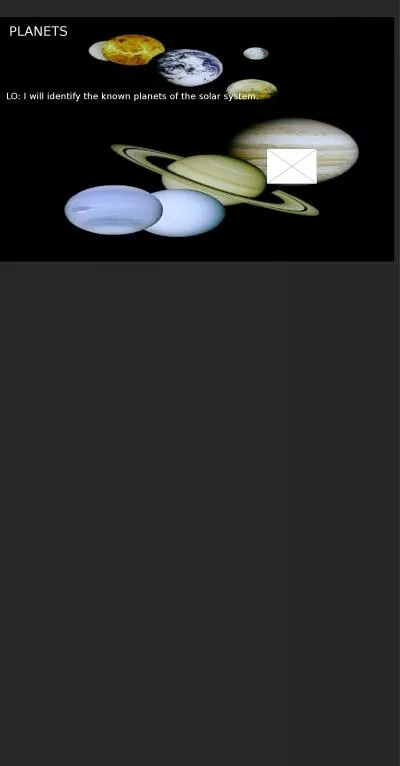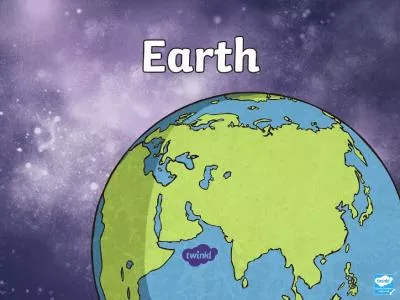PPT-What Keeps the Planets and Moons in Orbit?
Author : trish-goza | Published Date : 2017-05-11
EST0521 Describe the motion of planets and moons in terms of rotation on axis and orbits Advanced NoteTaking Practice 101 Every time you see something typed in
Presentation Embed Code
Download Presentation
Download Presentation The PPT/PDF document "What Keeps the Planets and Moons in Orbi..." is the property of its rightful owner. Permission is granted to download and print the materials on this website for personal, non-commercial use only, and to display it on your personal computer provided you do not modify the materials and that you retain all copyright notices contained in the materials. By downloading content from our website, you accept the terms of this agreement.
What Keeps the Planets and Moons in Orbit?: Transcript
Download Rules Of Document
"What Keeps the Planets and Moons in Orbit?"The content belongs to its owner. You may download and print it for personal use, without modification, and keep all copyright notices. By downloading, you agree to these terms.
Related Documents


